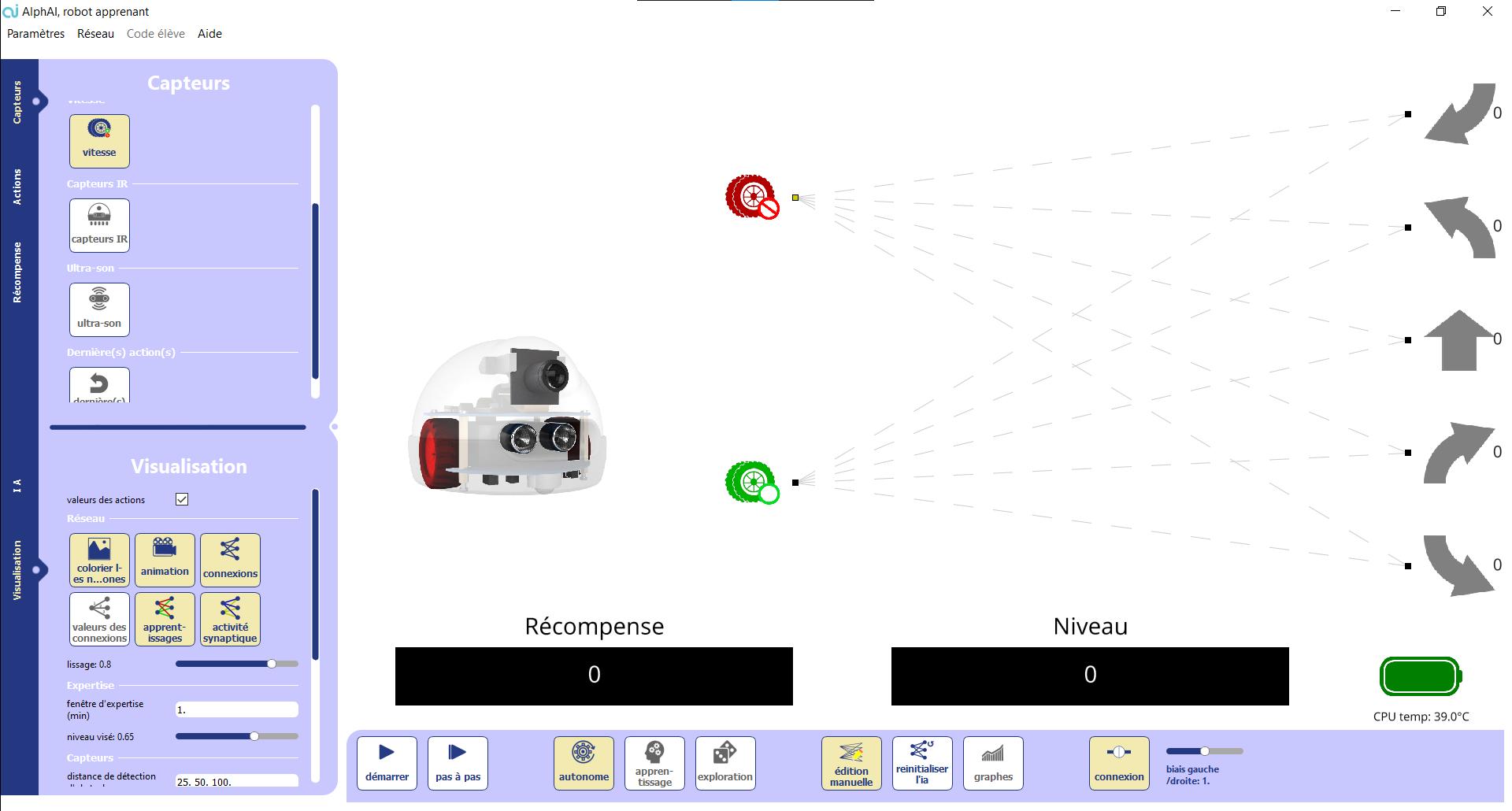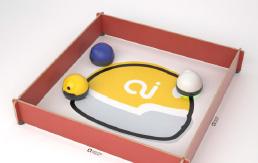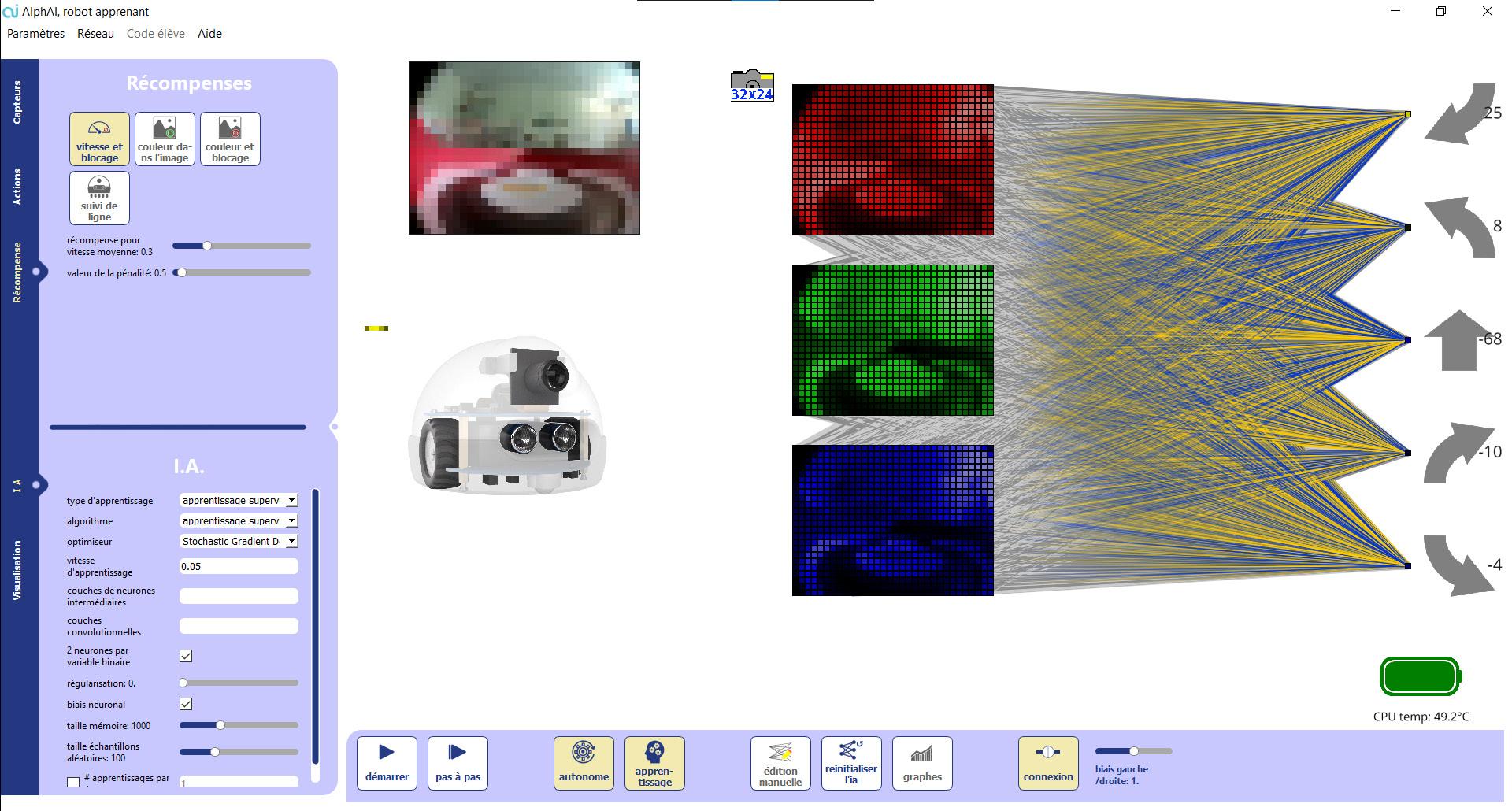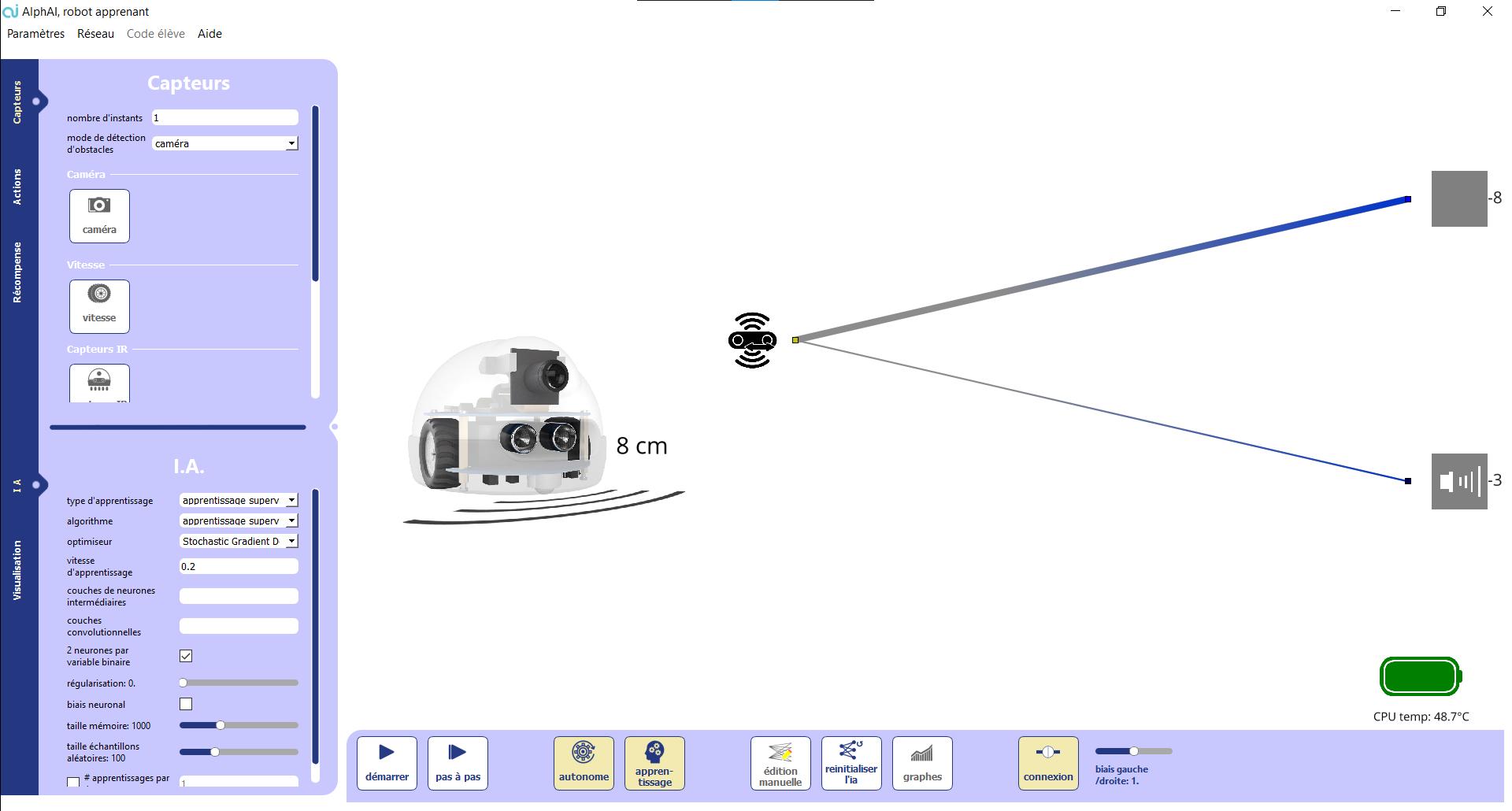
3 minute read
Reinforcement Learning - navigation blocked/moving
REINFORCEMENT LEARNING BLOCKED/MOVING NAVIGATION
Previously we have even created the network of connections so that the robot acts as we wanted. Now we are going to see that we can use artificial intelligence to make the robot build the same network by itself without human intervention. To do this we will use reinforcement learning. The principle of reinforcement learning is to encourage the robot to do certain actions by giving it rewards or punishments. The robot will then modify its behavior in order to maximize its level, which is the average of its rewards over the last 2 minutes. Here, the faster the robot goes, the more reward it will get, but if it stops, it will get a punishment. To maximize its level the robot should go straight as often as possible and stop as little as possible.
Load the configuration «learning by reinforcement - navigation blocked/moving». Or to select the parameters yourself, start the program and then : • In AI tab : - Select «q-learning simple». • In sensor tab, select : - «blocked/moving». • In control bar : - unset «exploration». • In reward tab : - select « Speed and blocked ».
Unlike last time, the sensors are not connected to a single action but to all of them at the same time. Each connection has a different weight that corresponds to the reward the robot expects to receive by using this connection. For now, the weights are randomly initialized.
Start1 the robot. You can also launch it step by step2 to better understand what happens at each step.
Initially the robot is not stuck, for him the best action, the one that would bring him the most reward (the one with the strongest weight) is to go backwards, so he chooses this action. But since he doesn’t get any reward, he decreases the weight of this stop, then he starts again. Since it still doesn’t get a reward, it keeps decreasing it, until this weight becomes less than that of another stop. At this point, the robot thinks that the action that gives it the most reward is turning left. So it turns left, gets a reward higher than its prediction, so it increases the weight of this edge until it stabilizes at 30. At this point, the robot thinks that turning left is the best action, and since this action makes it turn without ever stopping, it will continue doing it indefinitely.
The robot starts to turn left without stopping. But this is not his best action: he would have a better level if he went straight ahead. But since the robot has never tried to go straight, it cannot know this. So we have to force the robot to try.
Activate the exploration3 box in the bottom tab. When exploration is enabled, the robot will not necessarily choose the edge with the highest weight, but will occasionally choose another direction. When the robot finally chooses the random go straight action, it will receive a high reward and increase the weight of this stop. After a while the weight of the ridge will exceed the weight of turning left, and the robot will start going straight instead of turning in circles.
After a while, the robot has the desired behavior (going straight as often as possible, backing up as soon as it gets stuck), but this time it has done it entirely by itself, without having to be told what to do.
.1 .2 .3
Concepts learned:
To allow the robot to learn without being supervised by humans, it is given more or less reward each time it performs an action. Depending on what it receives, the robot will adapt its choices in order to maximize its rewards. The rewards in question are simply a numerical value, negative if it is a punishment, that the robot seeks to maximize.
It is also necessary to allow the robot to explore and not always choose the action that seems best, because this will allow it to discover new actions that may prove to be even better.










